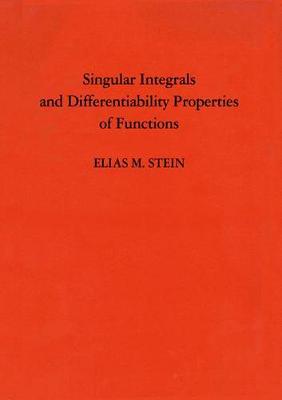Princeton Mathematical
3 primary works
Book 30
Singular Integrals and Differentiability Properties of Functions (PMS-30)
by Elias M Stein
Published 21 February 1971
Singular integrals are among the most interesting and important objects of study in analysis, one of the three main branches of mathematics. They deal with real and complex numbers and their functions. In this book, Princeton professor Elias Stein, a leading mathematical innovator as well as a gifted expositor, produced what has been called the most influential mathematics text in the last thirty-five years. One reason for its success as a text is its almost legendary presentation: Stein takes arcane material, previously understood only by specialists, and makes it accessible even to beginning graduate students. Readers have reflected that when you read this book, not only do you see that the greats of the past have done exciting work, but you also feel inspired that you can master the subject and contribute to it yourself. Singular integrals were known to only a few specialists when Stein's book was first published. Over time, however, the book has inspired a whole generation of researchers to apply its methods to a broad range of problems in many disciplines, including engineering, biology, and finance.
Stein has received numerous awards for his research, including the Wolf Prize of Israel, the Steele Prize, and the National Medal of Science. He has published eight books with Princeton, including Real Analysis in 2005.
Stein has received numerous awards for his research, including the Wolf Prize of Israel, the Steele Prize, and the National Medal of Science. He has published eight books with Princeton, including Real Analysis in 2005.
Book 32
Introduction to Fourier Analysis on Euclidean Spaces (PMS-32)
by Elias M Stein and Guido Weiss
Published 21 November 1971
The authors present a unified treatment of basic topics that arise in Fourier analysis. Their intention is to illustrate the role played by the structure of Euclidean spaces, particularly the action of translations, dilatations, and rotations, and to motivate the study of harmonic analysis on more general spaces having an analogous structure, e.g., symmetric spaces.
Book 43
This book contains an exposition of some of the main developments of the last twenty years in the following areas of harmonic analysis: singular integral and pseudo-differential operators, the theory of Hardy spaces, L\sup\ estimates involving oscillatory integrals and Fourier integral operators, relations of curvature to maximal inequalities, and connections with analysis on the Heisenberg group.


